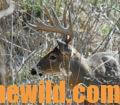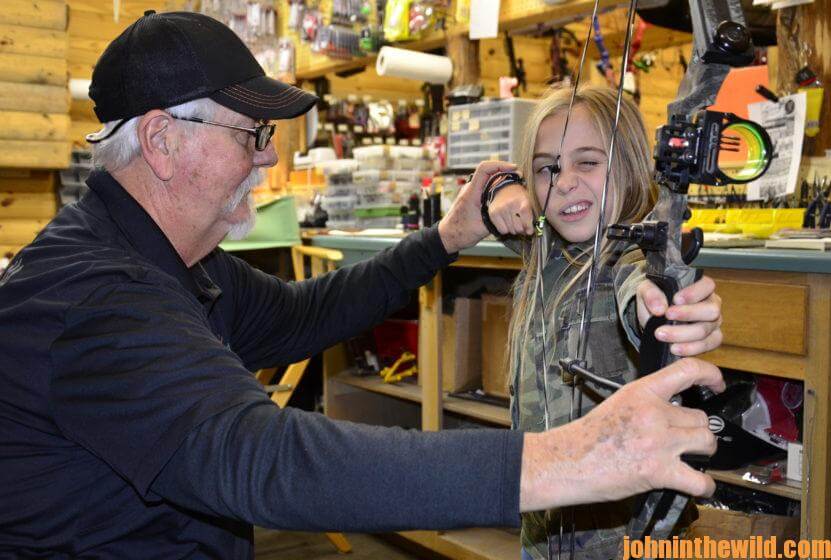Editor’s Note: Everyone hopes to interest more young people in hunting. Avid bowhunters Michael Braden and Rocky Drake are helping youngsters to learn more and come into the sport.
* Identifying Long and Short Shots and How to Make Them with Your Bow:
“When I’m hunting, I do my best to keep my shots as close as I can possibly get them. That being said, you have to consider the game you’re hunting and the location and the terrain where you’re hunting. When I’m hunting Texas whitetails, I try to get the deer inside 30 yards. I think the deer out at 30 and 40 yards can react to the bow and possibly jump the string. When you’re getting deer in close, you have another problem with the deer being able to see, smell and hear you. But as you begin to hone your skills 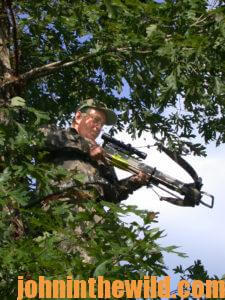 as a hunter, you can get a white-tailed deer within 20-25 yards regularly. That’s a good range for a bow shot. So, even though I can take a 30-yard shot, I prefer to have the deer within 25 yards or less.
as a hunter, you can get a white-tailed deer within 20-25 yards regularly. That’s a good range for a bow shot. So, even though I can take a 30-yard shot, I prefer to have the deer within 25 yards or less.
The longest shot I’ve ever had to make was on a really-nice mule deer in northern Colorado at 72 yards. I was in a pop-up blind and seated in a chair. The animal had no idea I was there. The deer was relaxed and feeding, and I came to full draw several times, but then let-down because the shot wasn’t just-right. I know there are many people who take shots at 72-yards and longer, and at that place and at that time, I felt confident to make the shot.
On a bigger animal like an elk or a moose that’s won’t react as quickly as a whitetail, you may be able to push your goal distance out to 30 or 40 yards. But my main thought is that I want to make sure that the animal will be where I’m aiming when the arrow arrives at that spot. You can take long shots if your ability and the weather and terrain conditions allow you to take those shots, and I practice at distances of more than 100 yards.
To get ready for bow season, always practice beyond the distance at which you plan to take an animal. For instance, if you say, “I only want to take an animal at 30 yards or less,” I’ll recommend that you practice at 40 and 50 yards. Then when you do have that 30-yard shot at an animal, you’re not thinking, “This is the outer limits of where I feel comfortable shooting.” If the animal is at 30 yards, and the bowhunter has been practicing at 40 or 50 yards, then the hunter thinks, “Thirty yards isn’t a problem, because I’ve been practicing at 40 and 50 yards. I know I can make that 30-yard shot.” Being efficient as a bowhunter has a lot to do with how confident you are when a shot presents itself, and by practicing at shots longer than you plan to take. Then you can build confidence in your ability when you do get a shot. Always practice at longer distances than you plan to shoot.
Too, most people don’t practice short shots, a point that’s drastically demonstrated in competition archery. The best professional archers in the country usually miss the short targets more often than the long targets, because very-few people really practice short shots. To be a better bowhunter, you need to practice at every distance that you may have to shoot. In competitions we rarely have shots shorter than 25 yards, but every once in a while tournament directors will put a target out at less than 10 yards. I advise bowhunters to practice a 4-yard shot, since to make that shot, you’ve really got to know your equipment and how to aim.
* Learning How to Shoot Your Bow and Teaching Ladies:
Each piece of the puzzle on how to shoot better is just as important as any-other part of the puzzle. Shooting better is not only about your equipment, but your form and all the elements that go into shooting accurately. I always start with the archer first. I want the archer to understand the shot sequence, the form and the execution of a good shot. Next, I want to help strengthen his ability to hold the bow at full draw and aim correctly. Archery is an individual sport, so you have to make sure that the individual is 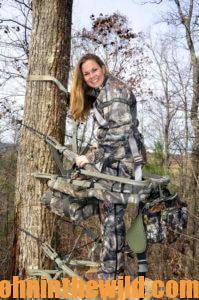 married to a bow that fits his or her individual needs.
married to a bow that fits his or her individual needs.
For me, the first considerations are draw weight and draw length. I start-out by making sure that the archer can pull the bow easily and comfortably, and that the draw length is matched perfectly to the individual. The archer is the core part of shooting accurately. Therefore, the equipment has to fit that individual as perfectly as possible. If the archer feels good about his form, shot sequence, bow mechanics and execution, he’ll feel much better about releasing the arrow when an animal presents a shot. Once the archer is in good shape for bow season, then we can start considering different equipment and why the archer may shoot better with certain types of equipment rather than other kinds of equipment. The arrow and the broadhead need to be matched to each bow and each bowhunter.
We’re seeing a lot of women coming into the sport of archery, and especially into the sport of bowhunting. One of the most-limiting factors seems to be the ladies’ concern about the strength required to pull bows. Of course, women come in different shapes, sizes and strength levels. I feel that the most-important consideration when teaching a lady to shoot a bow is to start-out shooting a very-light poundage, so she instantly sees that she can draw and hold a bow. She doesn’t have to be a super-strong athlete.
Also we have to make sure that the bow is not intimidating to a lady interested in the sport of archery. I want a lady to be able to draw the bow really-comfortably, even if I need to start her out on a very-low draw weight, because as new archers begin to shoot their bows, they will build muscle strength very quickly. If they shoot and practice regularly, they  will build muscles they don’t use every day. They will strengthen and hone those muscles, so they can move-up in poundage relatively quickly. I think their shooting enough arrows in practice sessions to learn something new every time they practice is very important. If they only can draw the bow back five times before they’re fatigued, they won’t be able to shoot enough arrows to progress quickly as archers. A beginner who only can get off 3-5 shots in a practice session will be very intimidated.
will build muscles they don’t use every day. They will strengthen and hone those muscles, so they can move-up in poundage relatively quickly. I think their shooting enough arrows in practice sessions to learn something new every time they practice is very important. If they only can draw the bow back five times before they’re fatigued, they won’t be able to shoot enough arrows to progress quickly as archers. A beginner who only can get off 3-5 shots in a practice session will be very intimidated.
I always start a lady pulling a bow weight in the mid- to the upper-20-pound range and make sure she can draw this weight comfortably. Hypothetically, I like to have a lady shooting 25-30 pounds and possibly shooting 30-40 arrows in a practice session, if she can shoot that poundage and that many arrows comfortably. From that baseline, we’ll begin to build her skill, muscle memory and the amount of weight she pulls.
I can take this new lady, who never has shot a bow before, and have her hitting the target at 20 yards within hours. Learning to shoot accurately, even for a beginner who’s never shot before, doesn’t take nearly as long now as it did several years ago. Today we have better equipment, better targets and better teaching methods. One of the big improvements in the speed at which a beginner learns is our ability to get newcomers fitted correctly with the right bows. In past years, many newcomers would just buy a bow and try to learn to shoot it. Today, we teach, “Let’s see which bow you can shoot most comfortably and enjoy shooting, and then make the buying decision.” If the student is fitted properly with the right bow, he or she can be proficient enough to hunt in an extremely-short time. I think 2-4 months of consistent practice and building-up strength, understanding and knowledge of the sport is enough time for anyone who really wanted to learn to bowhunt to become proficient enough to go into the field and take game when bow season 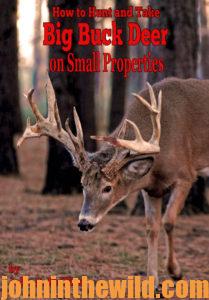 arrives.
arrives.
To learn more about hunting deer, check out John E. Phillips’ book, “How to Hunt and Take Big Buck Deer on Small Properties,” available in Kindle, print and Audible versions at (http://amzn.to/1vIcj4m), or copy and paste this click into your browser.
Tomorrow: Remembering to Continue Scouting for Deer During Bow Season


